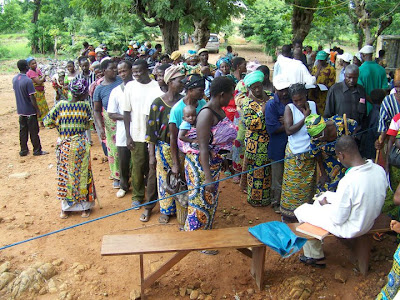I'm somewhat slow in bouncing back from the North GA UMC Annual Conference. There's a lot to do the next few days in my regular work. I'll try to post more of my reflections on the #NGAC11 soon that might add to the official reports I've previously shared.
A VERY interesting part of this season is to see what other Annual Conferences are doing, what they've decided, and who they've elected to General Conference & Jurisdictional Conference. Methodist conferencing continues to inspire, challenge, baffle, and aggravate! Yet, something about it also leads to collective conversation, wisdom, and experience of God that also draws me deeper into the Methodist way and give greater hope as we seek to follow Christ and live in the present Kingdom.
Andrew Thompson points to the work of one conference that offers some helpful clues as they are 2 years into reorganization for shared ministry and vitality in the
Arkansas UMC. “'Imagine Ministry' presents a more specifically Wesleyan focus for ministry at the local level, but it also backs it up with concrete structural changes..." They get my attention with emphasis on faith formation and collaboration among churches.
I was so intrigued that even in my post Annual Conference stupor I turned to their document found at
Imagine Ministry 2011.
A quote first as reality check:
"Fifty years ago, the average age of Methodists paralleled the population of the United States. Today the average age of an American is 36. The average United Methodist is 57 years old. Our society consists of five generations. Growing churches may include all generations, but must include the youngest three. If the local congregation has only the oldest two generations in age represented in its attendance — age 63 and up — then in twenty years, the congregation will struggle to exist. These statistics are descriptive of our condition and give us information about ourselves as a connectional church across the state of Arkansas."
There is far too much to share here so I'd urge you to read the document for yourself. This will be fun to watch as they model a dynamic new relationship that is true to our denomination and better connects local ministry with a shared conference strategy.
Some noteworthy changes:
"Currently there is no one responsible and accountable for developing regional strategies of mission that are geographically and demographically sensitive and appropriate."
"With the district resources of multiple congregations, and local extension ministries, and with access to conference and national resources the district superintendent is the appropriate role and conference staff person to develop regional (district) missional strategies and work plans."
"By reducing the primary role of the district superintendent to missional strategist and deployment specialist, the district superintendent is to be freed up to do the most important work of this position – understanding the district mission field and the congregations in order to make the most appropriate appointments based on the gifts and effectiveness of clergy. With larger districts and a smaller but clearer role, a good bit of the work of district ministry will be shared collaboratively with congregations, clergy, congregational coaches and circuit elders (see pages 27-28). This pushes the real work of mission and ministry closer to the mission field and the local congregation, where it belongs.
"There are new roles created - Congregational Coaches and Circuit Elders: These are new roles for people who are already working in the field."
In addition to a greater emphasis on communication they also develop "two new networks - The Network for Personal Holiness and the Network for Social Holiness."
Check out the entire document and the proposals. I think the conclusions they find would be similar to most conferences and offer an exciting example of a renewed connection and dynamic between church and conference.
1. The United Methodist Church in Arkansas must recapture its sense of urgency to evangelize those living in our communities.
2. The mission field in and around local churches must be the primary focus of ministry.
3. Leadership for both clergy and lay leaders must be improved to a level of excellence.
4. Clergy and lay leaders must be held accountable for outcomes of transformation.
5. The Annual Conference must be more responsive to local congregations.








